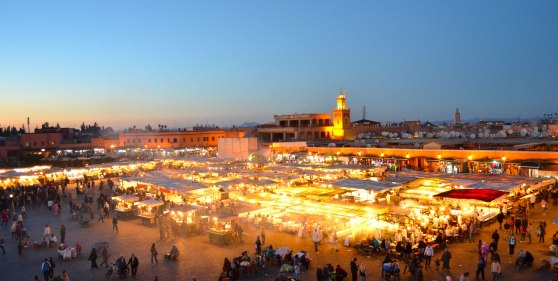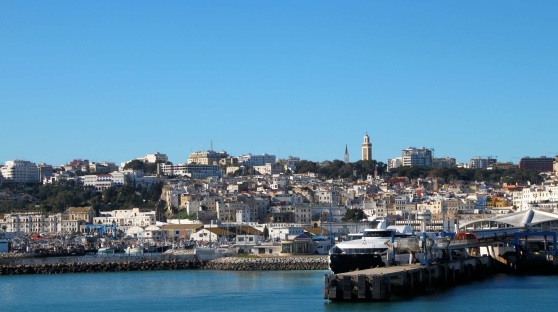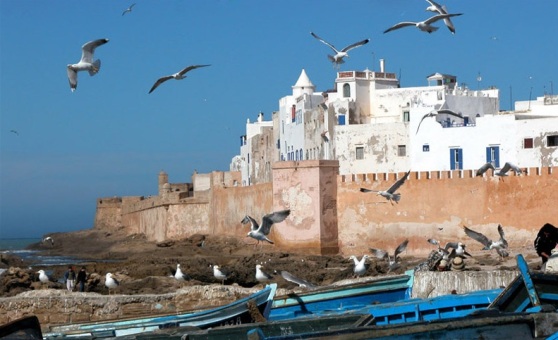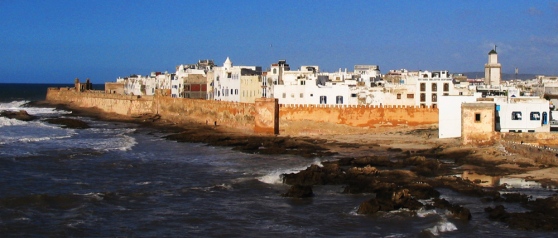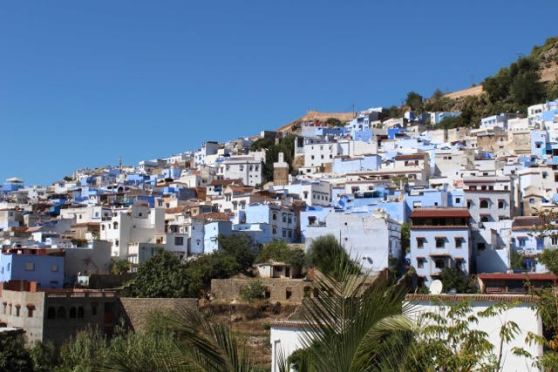Fez competes with Marrakesh for the title of Morocco's most extraordinary city. This is the nation's profound capital, and notwithstanding the infringement of advancement, it has kept up its bona fide intrigue down through the ages, clutching its stately bearing as an Imperial City. Its minaret and dome dominated horizon and ageless, disintegrating Islamic design are top things to see for travelers. Culture lovers will have a field day extending their necks along the tight alleys at all the landmark attractions. With unique structures everywhere, this Moroccan city is one in your vacation destination. The Fez City tours of many reputed travel organizations offer you the perfect opportunities to explore and enjoy at this Moroccan city.
The landmarks of Fez City
There are many places of tourist interest in Fez. Amongst them, there are some, which requires a visit during your vacation.
Medersa Bou Inania
The Medersa Bou Inania was worked somewhere between 1350 and 1357 by the Merenid sultan Bou Inan. One of only a handful couple of religious structures in the city that non-Muslims may enter, the Medersa is a rich compositional jewel and a standout amongst Morocco's most perfect structures. Up until the 1960s, this was yet a working philosophical school, and the rebuilding endeavors since that time have reestablished it to its unique excellence. The cut woodwork and stucco enhancement is brilliant and is a tribute to Morocco's master artisans.
Medersa el-Attarine
Abu Said built another case of exceptional Merenid design, the Medersa el-Attarine in 1325. The patio here is an impressive showcase of the multifaceted beautification from this period; with expound zellige tile-work and cedar woodcarvings. The upper floor is comprised of a warren of cells, which were once home to understudies examining religious philosophy at the Qaraouiyine Mosque. If you scale onto the housetop, you can get extraordinary perspectives on the green-tiled top of the Qaraouiyine Mosque itself.
Fes el Bali
Fes el Bali is the medina region and the city's most established neighbourhood. It is believed to be the biggest perfect enduring medina on the planet. The principle entryway into the territory is Bab Boujloud. As you approach this impressive old door, you get brilliant perspectives on the area's acclaimed milestone: the minaret of the Medersa Bou Inania, which sits soon after the Bab Boujloud entryway. Inside its dividers, the drifting avenues wind out into two unmistakably extraordinary locales isolated by a meandering waterway. The left bank is home to the most notable landmarks and most of the shopping souks, while the right bank might be scruffier yet are brimming with local life and photogenic alleys. The right bank likewise has the premium structures to look out including the Al-Andalus Mosque, worked in 1321 and noted for its unmistakable green and white minaret, which goes back to the tenth century. Adjacent, you will discover an assortment of different fascinating landmarks including an old fondouk and the disintegrating Medersa Sahrij. The whole Old City is a walker's joy, with many chances to explore and drench up the environment of Fez life. Know that the region is uneven, and the paths lay with cobblestones, so wear sturdy shoes.
Souks District and Tanneries
For customers, Fez is a heaven of local craftwork with vivid Moroccan shoes, leatherwork, metalwork, rainbow-glass lights, and tiles all showed at stalls all through the locale. The lanes only west of the Qaraouiyine Mosque have the best convergence of shopping openings. This is likewise, where you can visit the well-known Chouara tanneries of Fez, one of the top activities here. Here, you can watch the customary dying of animal skins - the initial phase in making Morocco's many leather items. Leather shops encompassing the tanneries give bird's-eye views over the zone from their housetops and are the best spot to take photographs.
Mellah
The impressive old Mellah or Jewish Quarter is in Fez el Jedid, only north of the Royal Palace. All through this smaller area, the paths line up with fine however exceptional runs down of mid-twentieth century houses, which were once home to the dynamic Jewish people group of Fez. You can visit the little reestablished Aben-Danan Synagogue here. On the edge of the Mellah are the meandering Jewish burial ground, one of the city's most quiet spots, and a Jewish Museum lodging an accumulation of items featuring Moroccan Jewish life and culture.
Borj Nord and the Merenid Tombs
For the best perspectives over Fez, stroll up the precarious slope just outside the city walls, to the Borj Nord zone. Here, you will locate a sixteenth-century post, home to a fantastic arms exhibition hall. The accumulation of weapons incorporates some incredibly unique pieces that speak to arsenal from over the world. Amid the reserve is the five-meter-long gun with a weight of 12 tons utilized amid the Battle of the Three Kings.
In the wake of review the arms exhibition hall, keep heading up the slope to the summit where a dispersing of brilliant stoned Merenid tombs sits. Even though the graves are in a vigorously demolished state today, you are here for the perspectives, which take in the entirely walled medina region and out to the green slopes past.
Qaraouiyine Mosque
Worked in AD 857 by Tunisian migrants from the heavenly city of Kairouan, the Qaraouiyine Mosque was one of the medieval period's most recognized colleges. Today, in its capacity as a working mosque, it is one of Morocco's biggest focuses of love, with a prayer lobby that can hold 20,000. The library is one of the most established on the planet and contains more than 30,000 books. Among the gathering is a ninth century Qur'an. Non-Muslims cannot enter the mosque, yet you can get great perspectives on the mosque from close-by restaurant tops.
Fez el Jedid
The Merenids developed this "New City" in the thirteenth century when they understood that Fes el Bali would be too little to even, consider containing their royal residences. The fabulous Royal Palace becomes the dominant focal point here though not open to general society and behind it; mosques and medersas fill the host of paths. There is a peaceful air to this little segment of the city, which sits between clamoring Fes el Bali and the European-style Ville Nouvelle, and it makes an attractive, quiet break between these two quicker paced universes.
Batha Museum
The Batha Museum is inside a Hispano-Moorish summer royal residence worked in the late nineteenth century. The gallery gathering traverses through a choice of conventional Moroccan artistry, with woodcut entryways, fashioned ironwork, weaving, floor coverings, and gems. The focal point display of the historical centre is the earthenware room, where you can see the popular Fes blue potteries, hued with cobalt. More intriguing than the presentations themselves is the structures own unique improvement and the beautiful interior patio garden, which is loaded with cool trees and tall palms and is a genuine oasis inside the city.
Nejjarine Museum of Wooden Crafts
Directly amid Place Nejjarine, encompassed by metalworker workshops, you will discover the Nejjarine Museum in an old fondouk, changed into a historical centre showing Moroccan wooden artworks. Here, in the salons where merchants once dozed on their excursions to town are presentations of engraved entryways, share chests, and mashrabiya window outlines. The focal yard of the fondouk, with its strong columns and overhangs, finished in cut wood and stucco detailing, is deserving of the passageway cost alone.
Tazzeka National Park and Taza
Taza established by the Berbers in the fifth century and was before a stronghold that protected the course prompting prolific terrains in the west. In the old town, arranged over the cutting edge, there are grain markets, souks for mats, gems, and floor coverings, just as the remaining parts of the old kasbah. Inside Taza's Great Mosque is a standout amongst Morocco's most excellent bronze crystal fixtures, which bears 514 oil lights.
At a little distance are the Friouato Caverns, a shelter for spelunkers. These caves reach down to a profundity of 180 meters, with stalactites and stalagmites covering a fairyland of the mineral model. Taza is likewise the best base for undertakings into Tazzeka National Park and its fantastic forest of cork oaks and cedars. The move to the summit of Djebel Tazzeka is all around remunerated by staggering perspectives over this lush wide open and out to the snow-bound pinnacles of the Middle Atlas.
Sefrou
This walled town is a picture taker's fantasy and radiates a clean and unhurried air. Previously a noteworthy point on the caravan courses, Sefrou was a prosperous and cosmopolitan focus. In any case, by the twentieth century, its prime had since quite a while ago passed but has maintained its charm to attract visitors. The absence of investment here, however, has implied that Sefrou has figured out how to hold quite a bit of its notable appeal, and there are heaps of flawless old structures in its middle.
Moulay Yacoub
This spa town appeared because of the warm corrective waters in the encompassing field believed to ease the suffering of ailment, skin issues, and nose and throat issues. The hamams in the town offer a local encounter where you can be scoured, cleaned, and afterwards soaked in healing spa waters. Try not to anticipate that the experience should be the spa-type treatment you get in a hamam in Turkey. It is the genuine local bargain here. For the less bold, there is an extravagance spa nearby where you can douse.
Fez Festival
For ten days every year, Fez turns into the middle for a spectacular celebration that unites artists from all over the world. The Festival of World Sacred Music is the greatest celebration of its sort, and the arrangement of shows some ticketed and others free covers everything from Sufi artists from Turkey to sitar players from India. The absolute most celebrated occasions are in the expansive court fronting Bab Boujloud and are open to enter. The other melodic exhibitions occur at settings all through the city.
Places to stay in Fez
To experience all these places and to explore the cultural and historical diversity of Fez you need to stay here. The Fez City tours of reputed tour operators give you the opportunities to have the best of exploration. Let us have a look at places to stay in Fez.
To ingest the inebriating sights and sounds of Fez the best places to stay is in or close to the Medina of Fez, a UNESCO World Heritage site, with its energetic souks, the tangle of photogenic alleys, and unique landmarks, for example, Bab Boujloud (the medina's principle entryway). A well-known kind of accommodation here are riads, traditional Moroccan guesthouses with private yards; breakfast generally incorporated into the rates. Here are some exceptionally appraised lodgings and riads in this suggestive area.
Luxury hotels: An astounding perspective on the medina is one of the high purposes of the Palais Faraj Suites and Spa, a reestablished nineteenth-century royal residence simply outside the medina, with comfortable suites displaying real Moroccan plan and an enticing pool. Additionally, with a pool, the Palais Sheherazade is a short walk around the medina's historical centres. Its romantic suites embellished with crystal fixtures and silk, and you can likewise unwind in the extravagance spa or palm-studded greenery enclosures. In the delightful Andalous Quarter of the medina, the boutique Karawan Riad, with a gourmet restaurant, spa, and particularly styled suites, brings out the excellence of old Morocco.
Mid-Range Hotels: Simply outside the medina, a short walk around the souks and Bab Boujloud, Riad Ahlam is a previous castle known for its considerate service and warm Moroccan appeal. At Riad Laaroussa, directly in the medina, colors name the wonderfully designated rooms and a precarious trip of stairs prompts a stunning housetop porch. Additionally, inside the medina, the Hotel and Spa Riad Dar Bensouda dwells in a delightfully reestablished royal residence with a little pool and hammam.
Budget Hotels: Riad Laayoun offers an amazing incentive with best perspectives on the medina from the housetop patio. A seven-minute walk around Bab Boujloud in the medina, Dar Hafsa is a tranquil retreat with warm accommodation, vivid rooms, and a housetop patio. Likewise profound inside the medina, the Riad Tara mixes customary Moroccan artisanship with the current structure and prides itself on its excellent services.
The foods to taste
Do you think your trip to Fez is complete without tasting the local cuisines? If you think it is not, then continue reading and you will know about the foods to taste.
Guests are presumably somewhat lost with just scraps of data as to what food to taste in Fez. As you read on you will know as to what local cuisines to try when in Fez.
Brochettes Kebab
Found throughout the year you cannot miss this in the Fez medina. They would typically come in three or four choices – sheep, beef, heart and liver brochettes. There is likewise a kefta or mincemeat choice. The small meat cubes would surprise you about the Fez brochettes and the taste.
Harira
Harira is the most prevalent soup in Fez and in entire Morocco. Had either individually or as a starter, harira is a flavorful Fez soup made with dried vegetables — lentil, chickpeas, fava beans and is generally cooked with sheep or sheep stock.
Tagines
Tagines are not explicit to Fez. They are a typical Moroccan dish named after the mud pot used for cooking. If you are an enthusiast of spicy flavors and moderate cooked meat then you should attempt a tagine in Fez. For a progressively conventional tagine visit one of the restaurants close to the Blue Gate in the medina.
Nougat
Europe and to some degree the Middle East may be Nougat's beginning place; it is presently immovably a Fez delicacy well known in the souks. Unquestionably, worth an attempt particularly if like me, you have a sweet tooth and like your desserts things are chewy.
Maakouda
It can both be a test and somewhat of a trek to experiment with maakouda. Even though you may hear that you have to trek a couple of miles from your riad into the new part of Fez city to get your Maakouda that is exactly not the case. There are many maakouda venders in the old Fez city medina.
Pastilla
It is necessary to attempt street food in Fez. Pastilla is a Moroccan meat pie produced using flaky baked good batter loaded up with minced pigeon meat and enlivened with cooked almond, sugar, and cinnamon. For those careful about attempting pigeon, there is likewise a chicken choice.
Couscous
While you can purchase couscous in any supermarket, the light and fleecy semolina balls began in North Africa. It is a standout amongst the most prevalent dishes in Morocco. You can have Couscous with meat or vegetable stew – ideal for absorbing the appetizing flavors.
So, now you know about the places to visit, stay and foods to try in Fez. To have the best of vacation in Fez, it is ideal to contact Pure Morocco Tours & Travel. They are the one relied on to have the best of tours by many for years. Call them at +212537699090 to have one customized for you.

